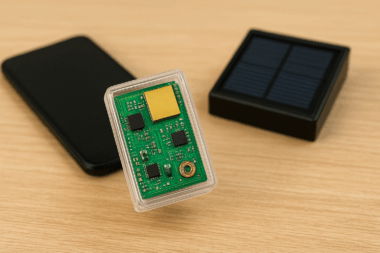Introduction
Technology’s rapid advancement has transformed how we approach fitness and wellness. One of the remarkable innovations in this realm is wearable fitness trackers. These devices have gained significant popularity recently, providing individuals with real-time insights into their physical activity, heart rate, and other health metrics.
The Rise of Wearable Fitness Trackers
The Growing Importance of Health Monitoring In today’s fast-paced world, people are becoming increasingly conscious of their health and well-being. The desire to lead a healthier lifestyle and technological advancements have fueled the demand for wearable fitness trackers.
Wearable fitness trackers offer numerous benefits to individuals seeking to monitor and improve their fitness levels. These devices provide valuable insights into physical activity, heart rate, sleep quality, and calorie expenditure. Users can set goals, track progress, and make informed decisions about their health and fitness routines by tracking these metrics.
What are wearable fitness trackers?
Definition and Purpose Wearable fitness trackers are compact electronic devices designed to be worn on the body, typically on the wrist. They use sensors, algorithms, and wireless connectivity to collect data related to physical activity and health metrics. The primary purpose of these devices is to provide users with accurate and real-time feedback on their fitness levels and overall well-being.
Popular Features and Metrics Tracked Wearable fitness trackers offer various features and can track multiple metrics. Some standard features include step counting, distance tracking, heart rate monitoring, sleep tracking, and calorie estimation. Advanced models may incorporate GPS tracking, blood oxygen levels, and stress monitoring.
Types of wearable fitness trackers can be categorized based on their form and functionality. The most common styles include wristbands, smartwatches, clip-on trackers, and bright clothing. Each type has its unique design, features, and target audience.
Manufacturing Process of Wearable Fitness Trackers
Design and conceptualization The manufacturing process of wearable fitness trackers begins with the design and conceptualization stages. Designers and engineers collaborate to create a product that is visually appealing, comfortable to wear and incorporates the desired features and functionality.
Component Selection Once the design is finalized, the next step is selecting the components that comprise the wearable fitness tracker. This includes choosing the display, sensors, processor, memory, battery, and wireless connectivity modules. Component selection is crucial to ensuring optimal performance and user experience.
Assembly and Integration After component selection, the components are assembled onto a printed circuit board (PCB). The PCB serves as the backbone of the device, connecting and interlinking the various components. The assembly process involves surface mount technology (SMT) and specialized machinery to ensure precise placement and soldering of components.
Quality Control and Testing Once the device is assembled, rigorous quality control measures are implemented. This involves testing the functionality of each component, verifying sensor accuracy, and conducting overall system checks. Only devices that meet the predefined quality standards proceed to the next stage.
Technology Behind Wearable Fitness Trackers
Sensors for monitoring physical activity Wearable fitness trackers incorporate various sensors to monitor physical activity. Accelerometers detect and measure movement, allowing for step counting, distance calculation, and activity recognition. Gyroscopes measure rotational motion, enabling more accurate activity tracking. Magnetometers assist with orientation and compass functionality.
Heart Rate Monitoring Sensors Heart rate monitoring is a crucial feature of wearable fitness trackers. Photoplethysmography (PPG) sensors use light to measure blood volume changes in the capillaries beneath the skin, estimating heart rate. Electrocardiography (ECG) sensors measure the heart’s electrical activity, providing more accurate and detailed heart rate data.
Other health monitoring sensors
Besides physical activity and heart rate, wearable fitness trackers can incorporate other health monitoring sensors. Galvanic skin response (GSR) sensors measure skin conductance, indicating stress levels. Skin temperature sensors track changes in body temperature, aiding in assessing overall well-being.
Wireless communication technology Wireless connectivity is crucial for wearable fitness trackers to sync data with companion mobile applications or cloud platforms. Bluetooth technology is commonly used for short-range wireless communication, allowing seamless data transfer between the tracker and a smartphone. NFC (Near Field Communication) enables quick and easy pairing with compatible devices. Some advanced trackers also incorporate Wi-Fi and cellular connectivity for extended functionality and data synchronization.
Programming languages and algorithms
Programming languages used in wearable fitness trackers Various programming languages are used to develop wearable fitness tracker software. C and C++ are commonly used for firmware development, offering low-level control and efficiency. Java is widely employed for developing mobile applications that interact with the tracker. Python is gaining popularity for its simplicity and versatility in data analysis and machine learning applications.
Algorithms for Activity Tracking and Analysis Activity tracking algorithms analyze the data from the sensors to provide accurate and meaningful insights into physical activity. Step-counting algorithms use accelerometer data to detect step patterns and estimate distances. Sleep tracking algorithms analyze motion and heart rate data to determine sleep quality and stages. Heart rate analysis algorithms process the raw heart rate data to provide metrics such as resting heart rate, heart rate zones, and recovery time. Calorie estimation algorithms use activity data and physiological parameters to estimate calorie expenditure.
Step-by-Step Guide: Creating a Wearable Fitness Tracker
Conceptualization and design: The first step in creating a wearable fitness tracker is to define the target audience, desired features, and aesthetics. The design phase involves creating sketches, 3D models, and mock-ups to visualize the final product.
Selection of components and sensors: Suitable components and sensors are selected based on the design requirements. These include the display, processor, memory, battery, and various accelerometers, heart rate, and temperature sensors.
Hardware Integration and Assembly The chosen components are integrated into a PCB using specialized machinery. Surface mount technology (SMT) is employed for precise component placement and soldering. Additional features like buttons and connectors are added during this stage.
Software development and programming The software development stage involves writing firmware for the microcontroller or system-on-chip (SoC) that controls the wearable fitness tracker. Programming languages such as C or C++ are used for low-level firmware development. Mobile applications that interact with the tracker are developed using Java or Swift.
Testing and quality control
Once the hardware and software are integrated, rigorous testing and quality control measures are implemented. This includes functional testing, sensor calibration, battery life testing, and overall system performance evaluation. Only devices that pass the quality control tests proceed to the manufacturing stage.
Future Trends and Innovations
Advancements in Sensor Technology Sensor technology continues to evolve with advances in accuracy, miniaturization, and power efficiency. Future wearable fitness trackers may incorporate more advanced sensors for capturing additional health metrics, such as blood pressure, blood glucose levels, or hydration status.
Machine learning and artificial intelligence
Integrating machine learning and artificial intelligence algorithms holds excellent potential for wearable fitness trackers. These technologies can enhance activity tracking accuracy, provide personalized insights, and detect patterns or anomalies in health data.
Integration with Other Health Monitoring Devices Wearable fitness trackers are likely to integrate with other health monitoring devices, such as smart scales, blood pressure monitors, or glucose meters. This integration allows for a holistic approach to health monitoring and provides users with a comprehensive view of their well-being.
Enhanced user experience and personalization Future wearable fitness trackers may focus on improving and personalizing the user experience. This includes intuitive user interfaces, customizable displays, and adaptive algorithms that adapt to individual preferences and goals.
Conclusion
Wearable fitness trackers have revolutionized how we monitor and improve our health and fitness. These devices offer real-time insights into physical activity, heart rate, and sleep patterns. By understanding the manufacturing process, the technology behind them, and the programming languages and algorithms used, users can make informed decisions when selecting and utilizing wearable fitness trackers to enhance their well-being. As technology advances, wearable fitness trackers are poised to become even more sophisticated, providing individuals with the tools they need to lead healthier and more active lives.



